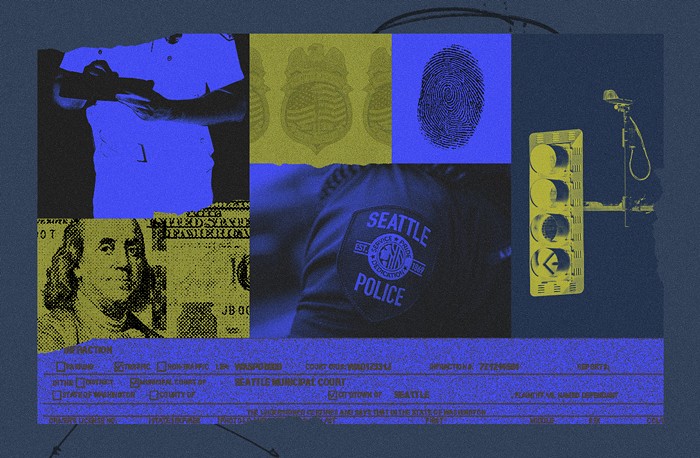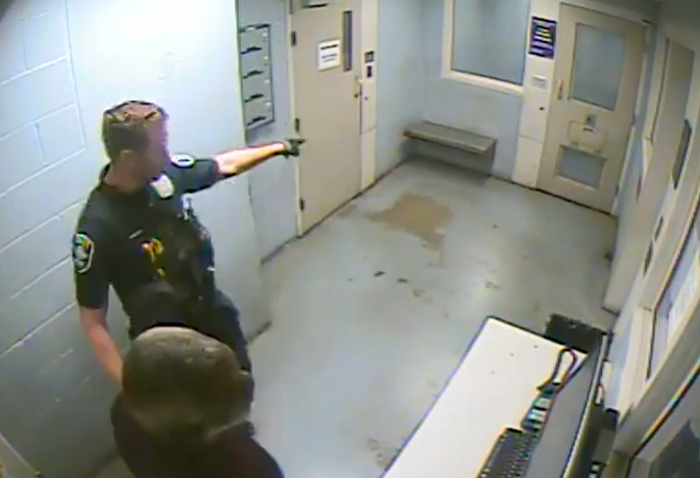That's because he was in charge of the officers at the rally. But the average citizen would have trouble identifying the officers in the 8" x 10" photos. The officers' name tags--required by city law--were either missing or covered by other parts of their uniforms.
The photos were presented by City Council Member Judy Nicastro at the September 5 Public Safety and Technology Committee meeting. Nicastro used the photos to prove a point originally brought up anecdotally in the aftermath of the rally [In Other News, "Police Cover-Up," Amy Baranski, Aug 30]. The point: Officers violated a city ordinance.
"The whole police department violated the law that day," says Isak Bressler, a legal observer during the rally.
Last fall, City Council Member Peter Steinbrueck sponsored and passed an ordinance to beef up the police department's existing policy of requiring officers to wear name tags and give their name and badge number when asked. The ordinance further stipulated that name tags need to be on the outermost piece of an officer's uniform.
So what happened at the rally? Sanford, confronted with the photos, said he could not respond to missing name tags on an individual basis. In one photo, police say it's possible that the unidentified officer's pocket was unbuttoned, causing the flap to cover the name tag.
In a second photo, officers in the background are wearing their name tags prominently, while the officer in the foreground is anonymous. "It could be that it's not a correct photograph," Sanford said at the meeting.
The photographer, George Hickey, who has worked on a freelance basis for such area papers as Real Change and The Stranger, says the images he gave to Nicastro are accurate.
"I have a traditional black-and-white darkroom, with chemicals," Hickey says. "I don't have a computer set up with Photoshop at all. It's certainly beyond my capability to change [the photos]."
Legal observers from the National Lawyers Guild were on hand at the rally to keep watch and take notes, and their statements back up Hickey's photographic evidence.
Observer Erik Nelsen notes that while most officers were identifiable, or cooperated with requests for identification, in several instances the photos tell the real story. For example, Nelsen asked one cop for his name and badge number, and was referred to the commanding officer instead.
"If I wasn't wearing a 'legal observer' shirt... I don't know how cooperative they would have been," Nelsen says.
Protesters and observers note other violations of the law. One protester claims she asked officers clad in riot gear for their names, and they didn't acknowledge the request.
"One officer failed to identify himself when asked three times," Bressler says. "One [officer] was wearing a reflective vest, so that blocked the name tag."
Steinbrueck says police compliance with the name tag law has become much better in the last two years, since the WTO demonstrations. But obviously, there are still problems when the police are involved in protest situations.
"I have received a number of complaints [about officers not wearing identification] since the ordinance was passed, from various events," Steinbrueck says. "It should be patently clear to every officer on the streets of this city that they should identify themselves."
Seven complaints have been made to the Seattle Police Department's Office of Professional Accountability regarding police conduct at the "Reclaim the Streets" rally. Of those, at least one mentions officer identification.


















